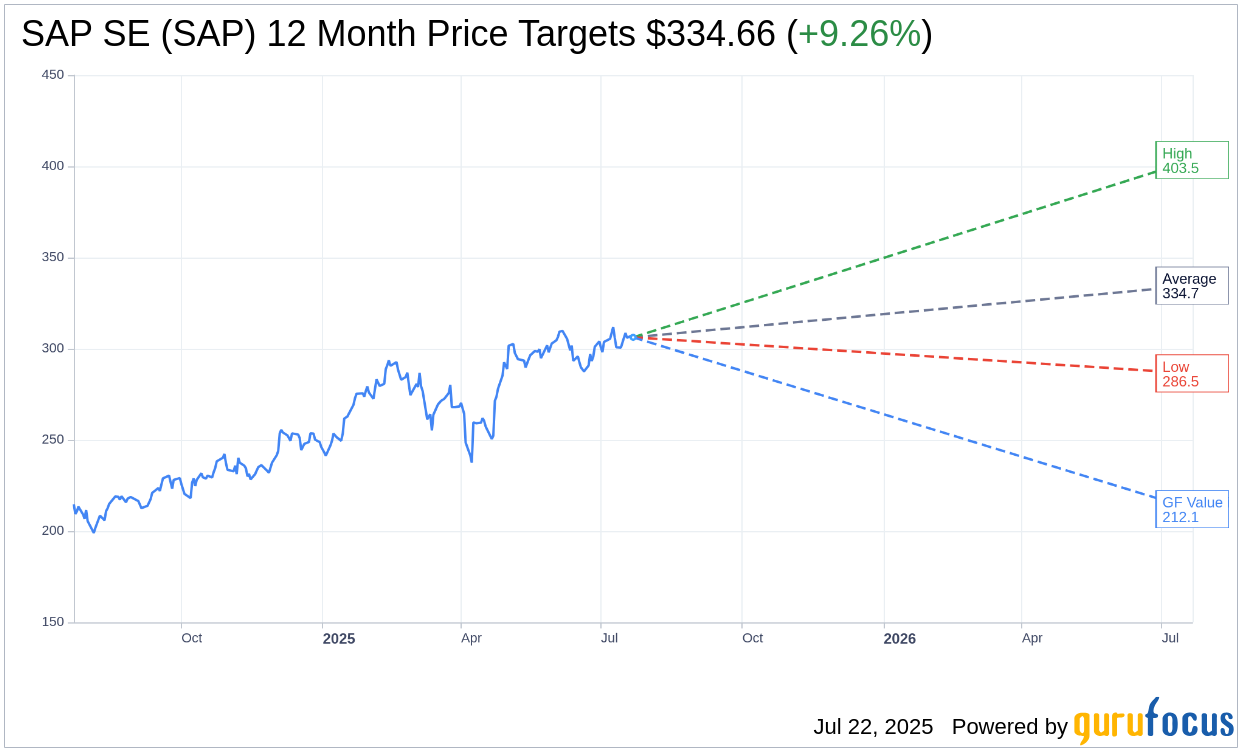SAP (SAP, Financial) remains optimistic about its future performance despite an uncertain business environment. The company forecasts its cloud revenue to increase to between EUR 21.6 billion and EUR 21.9 billion at constant currencies, a notable rise from the expected EUR 17.14 billion in 2024, marking a growth rate of 26% to 28%. Simultaneously, SAP anticipates its combined cloud and software revenue to grow to between EUR 33.1 billion and EUR 33.6 billion, up 11% to 13% from the projected EUR 29.83 billion in 2024.
The company also expects significant growth in its non-IFRS operating profit, estimated to reach EUR 10.3 billion to EUR 10.6 billion, a substantial increase from the forecasted EUR 8.15 billion in 2024, reflecting a growth rate of 26% to 30%. Additionally, SAP predicts its free cash flow will almost double to around EUR 8.0 billion at actual currencies from EUR 4.22 billion in 2024. The effective tax rate is expected to be approximately 32%, slightly down from the projected 32.3% in 2024. However, the company foresees a slight deceleration in current cloud backlog growth by 2025.
Wall Street Analysts Forecast

Based on the one-year price targets offered by 11 analysts, the average target price for SAP SE (SAP, Financial) is $334.66 with a high estimate of $403.49 and a low estimate of $286.50. The average target implies an upside of 9.26% from the current price of $306.29. More detailed estimate data can be found on the SAP SE (SAP) Forecast page.
Based on the consensus recommendation from 28 brokerage firms, SAP SE's (SAP, Financial) average brokerage recommendation is currently 2.0, indicating "Outperform" status. The rating scale ranges from 1 to 5, where 1 signifies Strong Buy, and 5 denotes Sell.
Based on GuruFocus estimates, the estimated GF Value for SAP SE (SAP, Financial) in one year is $212.07, suggesting a downside of 30.76% from the current price of $306.29. GF Value is GuruFocus' estimate of the fair value that the stock should be traded at. It is calculated based on the historical multiples the stock has traded at previously, as well as past business growth and the future estimates of the business' performance. More detailed data can be found on the SAP SE (SAP) Summary page.
SAP Key Business Developments
Release Date: April 22, 2025
- Current Cloud Backlog: EUR18.2 billion, up 29%.
- Cloud Revenue: Increased by 26% year-on-year.
- Cloud ERP Suite Growth: 33% increase, accounting for 85% of total cloud revenue.
- Total Revenue: EUR9 billion, up 11%.
- Operating Profit: Non-IFRS operating profit up 58% to EUR2.5 billion.
- Cloud Gross Margin: Improved by 2.6 percentage points to 75%.
- Operating Cash Flow: Increased by 31% to EUR3.8 billion.
- Free Cash Flow: Increased by 36% to EUR3.6 billion.
- Basic IFRS Earnings Per Share: EUR1.52.
- Non-IFRS Earnings Per Share: EUR1.44.
For the complete transcript of the earnings call, please refer to the full earnings call transcript.
Positive Points
- SAP SE (SAP, Financial) reported a 29% increase in its current cloud backlog, reaching EUR18.2 billion in Q1 2025.
- Cloud revenue grew by 26% year-on-year, with the cloud ERP suite showing a 33% increase.
- Operating profit increased by 58% in Q1, driven by strong execution of SAP's transformation program.
- SAP SE (SAP) maintained its position as the number one enterprise application software vendor according to IDC and Gartner.
- The company is seeing strong customer engagement across various industries, with significant deals in the automotive sector and public sector.
Negative Points
- Transactional cloud revenues experienced a slight decline in Q1, reflecting macroeconomic challenges.
- There is uncertainty regarding the impact of global trade disputes and tariffs on future conversion rates and revenue growth.
- The cloud revenue growth decelerated slightly from Q4, partly due to delayed ramp-ups from some deals.
- SAP SE (SAP) faces potential risks from geopolitical tensions and tariffs, which could impact its cloud gross margins.
- The company acknowledges the difficulty in making projections for the entire year due to ongoing macroeconomic uncertainties.
